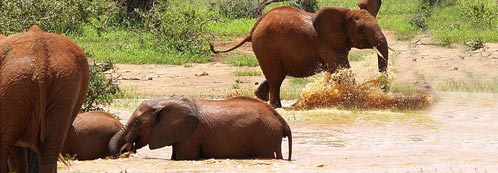Field Notes
January - April 2025
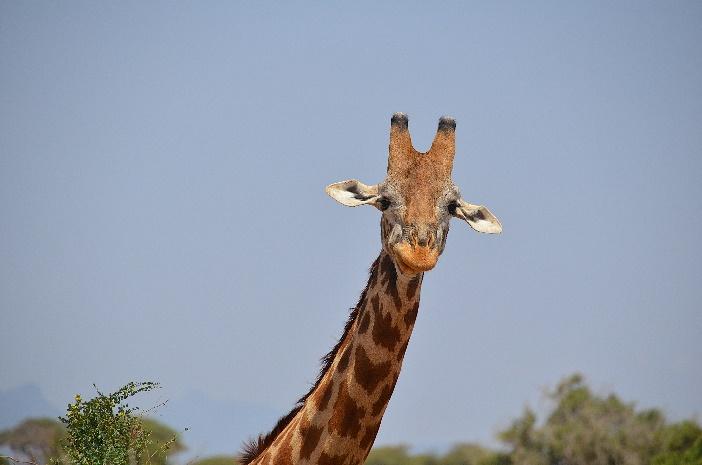
There were a few storms in January and February. In late March and most of April rainfall was heavy, rivers overflowing, thick vegetation and high temperatures. In early April it was 34 to 37 degrees almost daily. In February hundreds of Quelea were nesting in the southern bull area. Also in the bull area were small flocks of Eurasian Rollers and Carmine Bee-eaters. In April large flocks of Barn Swallows were perched on power lines in bull valley. On several occasions Cattle Egrets surrounded groups of elephants, catching insects from the tall grass. Tsavo elephants typically don’t like birds around them. In one family an adult female tossed her truck at the birds startling her calf who was standing under her.
Bulls
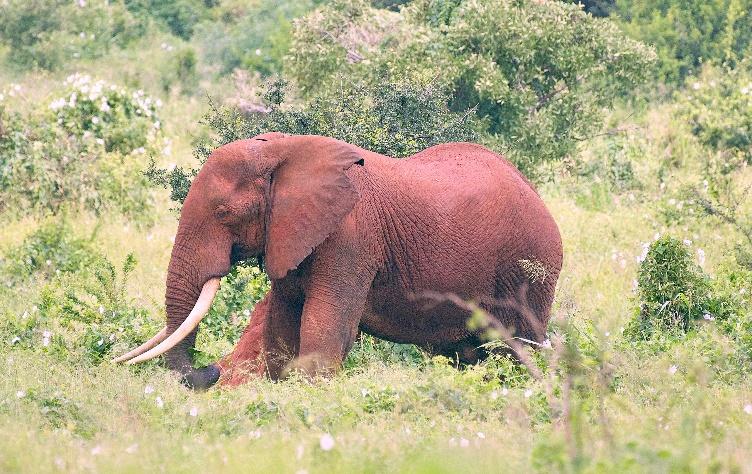
Most of the bulls were in small bull groups or with families, very few were spatially alone. In April, Tweed spent three days joining several families and then headed east through bull valley. Moonlight (photo right) was named and photographed 20 years ago. He has a distinct scoop notch in the top of his left ear. He most often associated with other bulls in the same age class: Blazer, Helix and Jarvis. He has a strong bond with two bulls older than he is: Skylight and Sunray. For now, he favors the hills bull area often with other bulls. As he gets older, he may move to the eastern bull area as Rudolf did. In late April he was in an aggregation of 46 individuals traveling east through bull valley heading to Voi Riverine.
Families
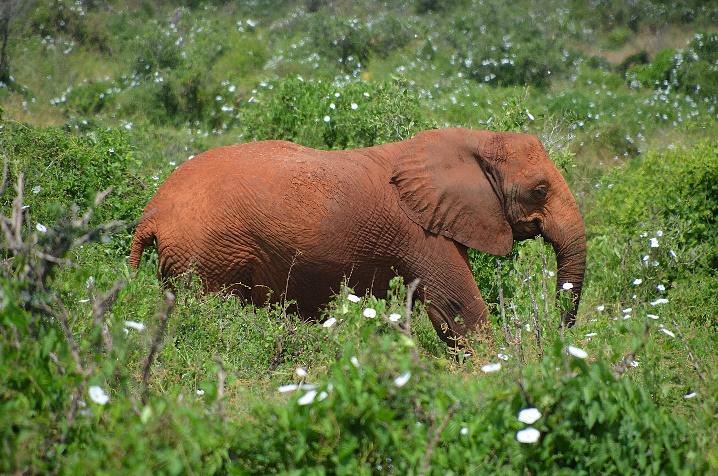
Batik-Azalea family spent February and March in the Hills area. When the rains started, they moved away from the hills. When they returned in late April Batik was accompanied by a new male calf. Also in the Hills area were Spring and her calf (Curl), Chestnut-Maple and Boscia with three tuskless females including Teal feeding on vines with white and pink flowers. Teal (Photo left) was photographed and named seven years ago, with her female four-year-old calf. Teal has a distinctive short-twisted tail. In 2020 she had a new male calf. This year at the end of April she was accompanied by her previous calves and a newborn. The grass was too tall to confirm the sex of the new calf. Teal is often with Lilac, B2 and Jute.
May - Aug 2025
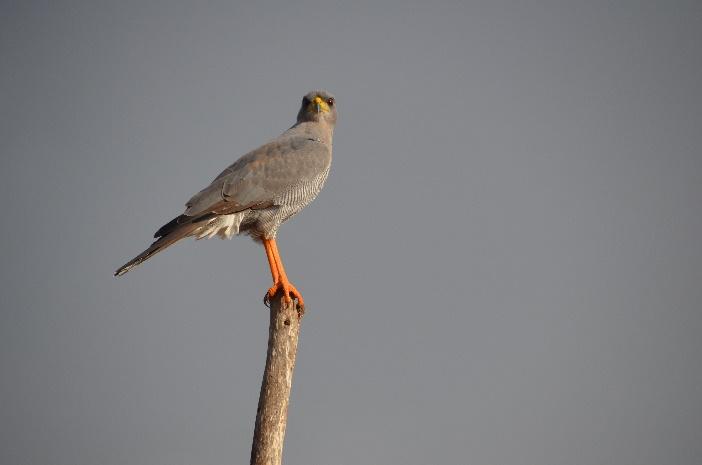
It rained several times in May and June. The temperature started dropping in May, earlier than previous years. In May large flocks of Quelea flew in waves through the bush. July and August were dry. Starting in late June is was quite cool, even elephants felt a temperature drop, holding their ears close to their shoulders with just an occasional flap. In the southern hill area large herds of Buffalo spent several days in the valley between the hills. Giraffe also were in large groups. In May Delonix produced beautiful yellow and white flowers. In July aggregation of elephants, both families and mixed groups spend several days at the base of the hills where grass, herbs and vines remained green. In late May the leaves of Commiphora and Lannea started to turn yellow and fall, earlier than last year.
Bulls
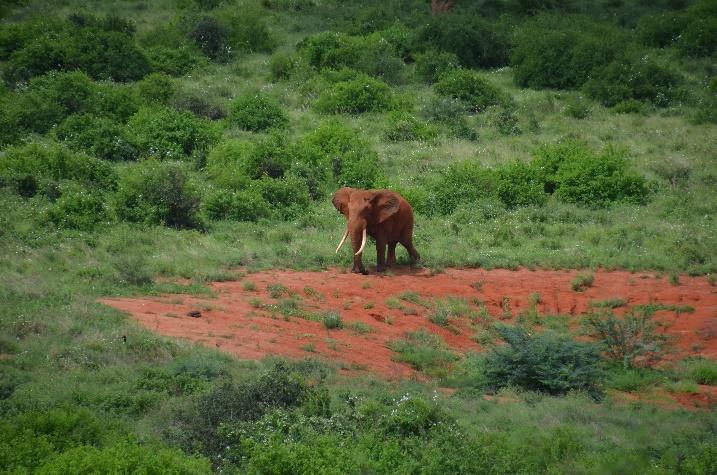
Many known bulls were with families in May and June; Tweed, Breeze and Pemba. A 45 year old bull was in Musth with a family at the base of a hill; but he was too far to identify. Breeze a young newly independent male was alone or with families; Splayed, Spring-her calf Curl and Chestnut-Maple. Tweed (photo right), was alone or with families. He spent May through July moving between the hills in the southern area. Wishbone spent several days at the base of Voi and Lion hill, often climbing up the hill to reach green plants. Pemba a 40 year old bull often alone was with two other bulls the same age in the valley.
Families
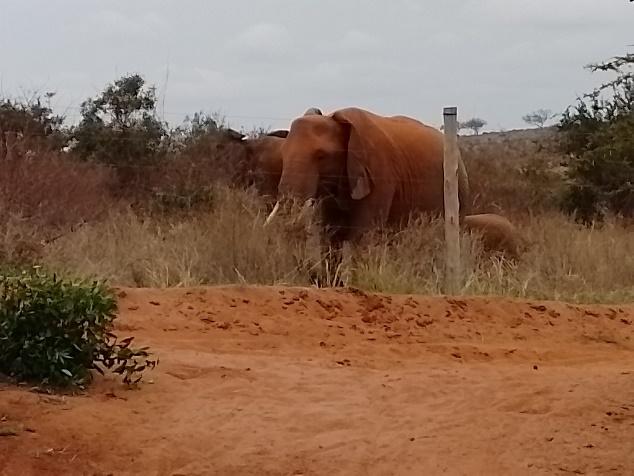
Between May and August, Batik with her new male calf (photo left) and Azalea with her male calf were often feeding on grass and herbs along the park electrical fence, where the plants remain green compared to the surrounding plants. They stayed in hills area for three months. This family rarely has the same number of individuals at each sighting. Typically, there are two or three young males in the group. Azalea seemed particularly agitated with them; poking a male to make him back away. This is a relatively rare behavior of Tsavo adult females. Spring with her male calf Curl spent May and June feeding in the southern hills area. Chestnut-Maple, Savanna-Summer (each with a 1-2 month old calf) and Boscia spent May and June in the valley between the hills.
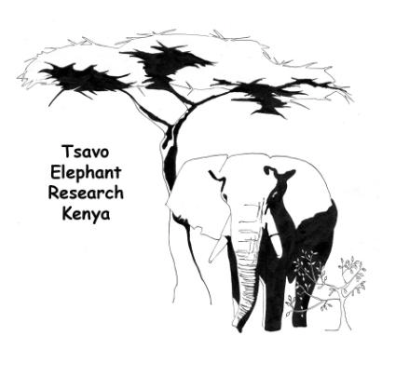
Tsavo Elephant Research Needs Your Help.
Donations are needed to continue this 30+ year field study
and support a Kenyan research field team.
We monitor the behaviors of Tsavo known bulls and families:
group dynamics, offspring & survival, musth cycles and habitat use.
Please click here or on the donate button
to send your donation.
Thank you!
Barbara
